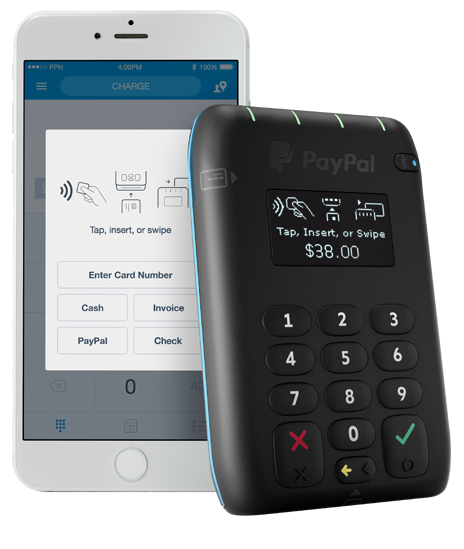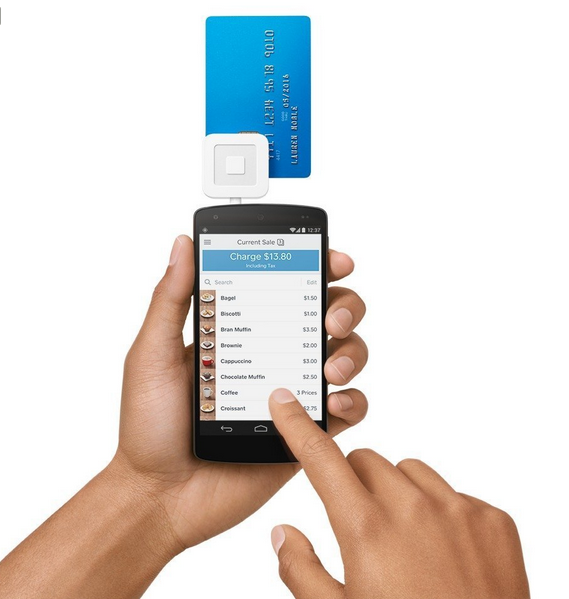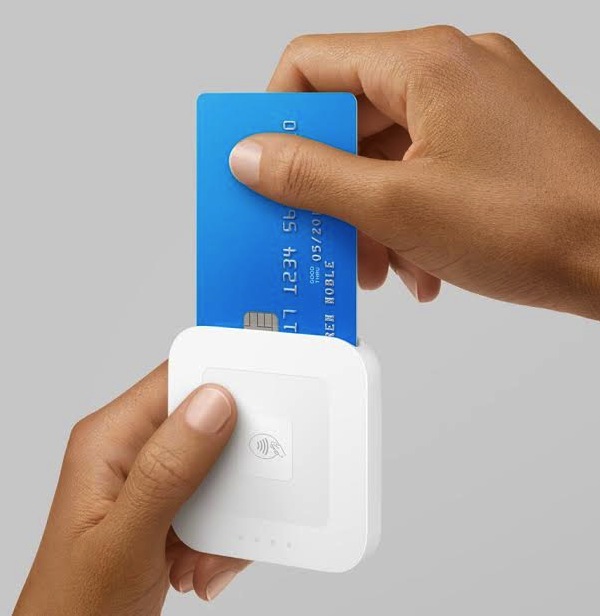Do the words “liability shift” mean anything to you? Because it’s happening a week from today. On October 1st, liability for fraud shifts from credit card issuers to merchants in the U.S. If you accept credit card payments for jewelry – or anything else – that includes you. You are a merchant.
 Starting a week from today, if you process a counterfeit credit card, you may be liable for fraud. Unless you have the proper gizmo.
Starting a week from today, if you process a counterfeit credit card, you may be liable for fraud. Unless you have the proper gizmo.
I’m stepping off my usual beat today to address this, because it affects so many people who read this blog. And because I know a lot about this. I’m not going to get into technical details. If you want background on the evolution of the EMV (chip) payment system in this country and abroad, read this story. If you want to know how it’s affecting jewelry retailers, read the one I wrote for JCK.
What I’m going to address today is aimed at small independent sellers who accept payments via credit card at trade or craft fairs, and anyone who plugs a card reader into a computer or mobile device to process people’s credit cards.
Let me clarify. This shift does not affect online credit card processing. It’s meant to reduce fraud from live card processing. “The shift to EMV significantly reduced the amount of fraud in brick and mortar merchants but the fraud in Europe has moved toward online fraud,” Slava Gomzin, author of Hacking Point of Sale, told me last year. “So the number of fraudulent transactions online was growing after the EMV was introduced.”
However, if you use or process credit cards for live transactions, this transition to chip payments will help eliminate the kind of hacking we saw with the Target breach. “Today, the U.S. is the easiest place to steal the card data,” Gomzin says. “Hackers are not super-smart people. They look for the easy way. Since Europe used mostly EMV – and it’s much more difficult to steal EMV data than mag stripe data – hackers moved to the U.S.”
First, you need to make your own transition to EMV. Order a new chip card reader now, if you haven’t already. You’ll find magnetic stripes on all credit cards, even those with embedded microchips. They are all swipe-able with your old reader but, from now on, always check to see if the card has a chip embedded. If it doesn’t, you’re safe to swipe with any reader. Fraud may result, but you’re not liable. If it does have a chip, don’t swipe the card with your old reader.
The only time fraud and liability lands on the independent business owner now is if you don’t have a reader that accepts chip technology and you swipe the magnetic stripe of a counterfeit or fraudulent chip card.
If you use PayPal to process payments, you can order their new chip card reader (available in October) for $149 with a $100 rebate to your PayPal account if you process $3,000 within three months. Their reader accepts magnetic stripe, chip or contactless payments (swipe, insert or tap). You don’t have to check for a chip with this reader. You’re covered. It looks like this.
 If you use Square, you have two options for processing EMV payments. Square’s reader costs $29 and accepts both magnetic stripe and chip card payments. You can order through their site or, if you have Amazon Prime, order it there
If you use Square, you have two options for processing EMV payments. Square’s reader costs $29 and accepts both magnetic stripe and chip card payments. You can order through their site or, if you have Amazon Prime, order it there and have it day after tomorrow. The standard Square EMV reader looks like this.

You can also opt to keep your old Square swipe reader handy and add the newest Square device that processes both chip and contactless payments via Apple Pay. This will eventually cost $49, refundable as a processing credit, but Square is giving away 250,000 of them free. Register here and you can grab one while they last.
 PayPal declined my request for an interview, but you can find information about their new reader via the link above. Square, on the other hand, was very helpful. A Square spokesperson told me last week they’ve been pushing to educate users on this shift through their blog and newsletters. “We’ve been trying to get the word out and let sellers know that they’re protected,” he said over the phone. “But there’s definitely a lot of misinformation out there, and a lot of confusion.”
PayPal declined my request for an interview, but you can find information about their new reader via the link above. Square, on the other hand, was very helpful. A Square spokesperson told me last week they’ve been pushing to educate users on this shift through their blog and newsletters. “We’ve been trying to get the word out and let sellers know that they’re protected,” he said over the phone. “But there’s definitely a lot of misinformation out there, and a lot of confusion.”
CM: It is confusing. The shift is happening in a week and I still have at least one credit card in my wallet that is magnetic stripe only – no chip – and most stores are still swiping even my chip cards. If there’s a big shift going on, I’m not seeing much evidence.
Square: It’s been the responsibility of the banks to get as many chip cards out there as possible but right now, that is definitely not the case. Numbers vary from study to study, but right now it looks like only about 40 to 60 percent of cards, or transactions out there, are chip cards.
CM: Liability shift to “merchant” means any seller, including an individual selling at a craft or trade show, is now liable for fraud, right? If someone with a mag stripe card wants to buy a bracelet from me, am I liable if their card ends up cloned and used fraudulently?
Square: This is a good example of the misconceptions going around. It’s important for sellers to know that if they still have the old credit card technology and someone comes in with a mag stripe card, they can still process that card. The only time fraud and liability lands on the independent business owner now is if someone comes in with a chip card that is counterfeit or fraudulent, and you don’t have a new reader that accepts that technology, and you swipe the magnetic stripe of that card.
CM: So people can still safely use their old Square reader, as well as the new one?
Square: We want to provide as many options as we can for sellers. We want to provide as many ways for them to accept any form of payment that works best for their business. So right now, we have a traditional mag-stripe reader. We also have a new chip card reader that accepts chip cards and mag-strip cards for $29. And the new reader that accepts contactless payments [via Apple Pay] and chip cards. So if you want to accept chip cards and Apple payments, for example, you can have our new reader in your pocket or in your hand and then have the old mag-stripe reader on your phone and you’ll be totally covered.
CM: To be clear, this new reader is free until the first 250,000 run out, and then it’s $49?
Square: We want to make it as affordable as possible for sellers to have access to this new technology. Because we’ve always believed that these technology shifts leave the sellers behind, especially independent sellers, and that it’s important to give them access to the tools that big businesses have. That’s why we’re offering 250,000 readers for free. Also, if people pre-order now, they can get $49 readers for a $49 processing credit, which also makes it essentially free.
So there it is. If you have questions, please leave them in the comments. I will do my best to answer, but I’d like as many people to learn from this as possible. For now, do yourself a favor. If you do person-to-person sales, order a chip card reader, if you haven’t already. Here’s to a safe and profitable holiday season!
Related products

